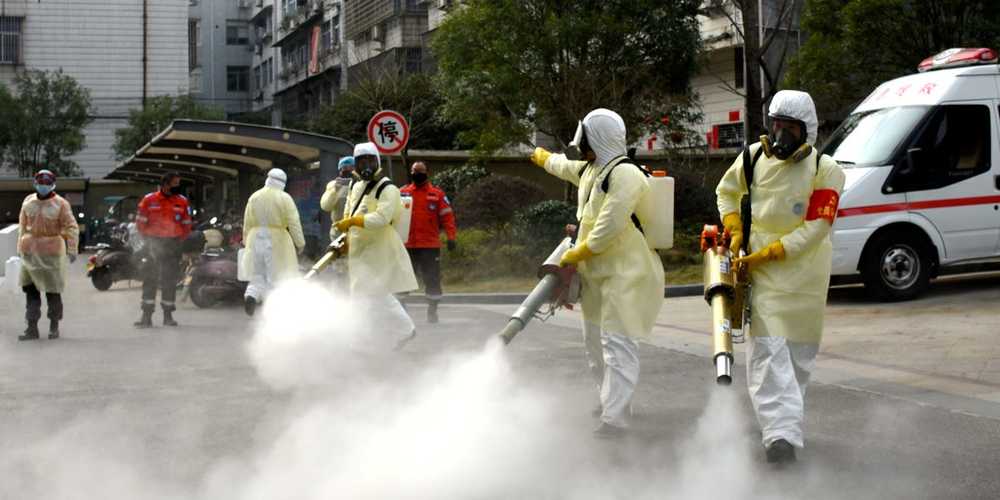Each 80-square-foot structure has a single bed, desk and chair, shelves and air conditioner/heater.



Wuhan coronavirus pandemic — kirkland, washington.
Cluster of 50 people sick at a single retirement home where 2 have been confirmed to have Wuhan Coronavirus.
KIRKLAND, Wash. — Dozens of residents and staff at Life Care Center of Kirkland, a nursing and rehab facility, are reporting symptoms that might suggest coronavirus, according to a statement from King County Public Health.

If planes were as reliable as in-flight Wi-Fi, we’d never get on a flight again. Fortunately, industry group Seamless Air Alliance is working to change that. The group operates under the mission of bringing “industries and technologies together to make the in-flight internet experience simple to access and delightful to use.” Its idea? To get rid of the toxic brew of current proprietary systems operated by each airline and instead establish a standard for in-flight Wi-Fi that can be flexibly swapped in and out to better allow airlines to respond as technology improves.
“The goal of the Alliance is to deliver high-speed, low-latency 5G quality access inside the plane,” the FAQ section of the group’s website states. “Access to the network will be seamless, meaning any enabled user device will work without any login, sign-on or other activities. The internet experience itself will be as good as, and in many cases better than, the home experience, including low latency, high speed, and a gate-to-gate continuity of service.”
An article for IEEE Spectrum notes that “a plane’s antennas are currently stored in a relatively small hump on the top of the craft, typically about 45 centimeters high. Even though it’s so small, that hump causes tremendous amounts of wasted jet fuel, [Seamless Air Alliance CEO Jack] Mandala says, causing an estimated minimum of an extra $75,000 per aircraft per year in fuel costs.”
Residents in Wuhan, China are shouting encouragement and singing songs from their apartment windows to boost morale amidst the coronavirus quarantine.


Choice is the one thing our creators gave us. Me, personally I prefer hemp, and not just because I smoke the female version for medicinal reasons, but because scientifically it makes sense, and can help unscrew #AmericanFarmers…Yes we need more forests, not less. However, we don’t need to use trees, when we have hemp. Pembient can 3D Print ivory, thus making animal Ivory obsolete, yet people still kill for Ivory. We can make wood products from hemp, yet we still fell trees. #HowDumbAreWe
Eco-Friendly Our hemp is grown using sustainable methods, which helps eliminate deforestation.
Made in the USA All hemp growth and material production is conducted in the United States of America.
Multiple Uses HempWood can.


Every crisis is an opportunity. With everyone staying home, this is the perfect opportunity for e-commerce, e-learning, online jobs, and big tech to expand. This is the beginning of a huge tech revolution. 2020 will be the techade (technology decade).
The virus is hitting China’s economy hard, but this is likely only temporary. China’s immune system is fighting back — building hospitals in record time, completely locking down a city and most importantly the entire nation uniting as one voice of support and solidarity.
Mario Cavolo called out the global response to the Coronavirus in his post “Something’s not right here folks” which originally went viral on LinkedIn and then subsequently all over Chinese social media. He compares the media response to Coronavirus with the H1N1 outbreak in the US, saying, “it’s not a conspiracy, it’s just a tragedy,” and “this vicious, political, xenophobic racist attacks and smearing of all things China needs to stop.”
What doesn’t break you only makes you stronger, and the Chinese people are resilient and will find ways to rise out of this crisis, likely coming back even stronger than before. How long that will take no-one yet knows, but the Chinese spirit is not even close to being broken, and we’ve seen how Chinese ingenuity in a time of crisis has led to entirely new operating models.

Chinese official house arrest their people under threat of coronavirus coronavirus-chinese-officials-lock-people-homes-ban-funerals-weddings-zhejiang.
In four cities that are home to more than 30 million people, each household is given a so-called passport. It permits one person to leave every two days.
Visit our sponsor, Brilliant: https://brilliant.org/IsaacArthur/
O’Neill Cylinders space stations are examples of large rotating habitats able to be constructed in space in which people and even a complex ecology might be transplanted. But what would it be like living in one and how would civilizations based inside them in the future tend to operate?
Visit our Website: http://www.isaacarthur.net
Support us on Patreon: https://www.patreon.com/IsaacArthur
SFIA Merchandise available: https://www.signil.com/sfia/
Social Media:
Facebook Group: https://www.facebook.com/groups/1583992725237264/
Reddit: https://www.reddit.com/r/IsaacArthur/
Twitter: https://twitter.com/Isaac_A_Arthur on Twitter and RT our future content.
SFIA Discord Server: https://discord.gg/53GAShE
Listen or Download the audio of this episode from Soundcloud: Episode’s Audio-only version: https://soundcloud.com/isaac-arthur-148927746/life-on-board-an-oneill-cylinder
Episode’s Narration-only version: https://soundcloud.com/isaac-arthur-148927746/life-on-board-…ation-only
Credits:
Life on board an O’Neill Cylinder
Episode 223; Jan 30, 2020
Writers: